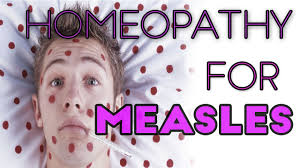Abstract: Hydatid cyst is an infection by a parasite named ‘Echinococcus granulosus’ of class ‘Cestodes’ which affects the liver or other organs. It should not be confused with the word ‘hydatid’ related to female organs which is not an infection. There is much scope for the management of real hydatid cyst of liver and other organs by homeopathy.
Introduction
Hydatid disease is an infection.The disease is also called hydatidosis. It is the result of formation of cysts in various organs by the larval forms of cestode parasite ‘echinococcus granulosus’. The disease comprises of various effects of cyst. Greek word ‘hydatis’ means drop of water. (1) The disease is more prevalent in temperate climate than in tropical areas. In India, the highest prevalence is reported in Andhra Pradesh and Tamil Nadu. (2) But the disease is not rare at all.
Homeopathic References
In homeopathic literature, there is a very little mention of the term ‘hydatid cyst’. Any reference (3) to the term ‘hydatid’ appears to be related to the gynaecological and obstetrical pathologies in connection with the ovary and uterus. (All medical students are aware of hydatidiform mole in the uterus). This apparent confusion in homeopathic literature is quite natural because the disease occurs in the interior of different organs and cannot be seen from outside. At the time of the stalwarts of homeopathy, there was no scope of using ‘imaging techniques’ by which the structural pathology inside the organ affected by the parasitic disease ‘hydatid cyst’ could be identified. The hydatidiform mole produces a passage of grape like material from the female genital tract. This is a visible evidence of disease and therefore readily came to the attention of the stalwarts.
The Parasite
The important species of cestodes responsible for hydatid disease is Echinococcus granulosus. (1) There is another species, Echinococcus multilocularis, which can produce what is called alveolar hydatid (because of the multiloculated appearance and not because it affects the lungs). Adult worm is a small tapeworm measuring 3 to 5 mm. It has three body parts – Scolex, Neck and Strobila. The Egg contains embryo having hooks. It is infective to man, sheep, cattle and other herbivorous animals. Larval form is found within the hydatid cyst developing inside the intermediate host. It represents the structure of scolex of the future adult worm and remains invaginated within a vesicular body.
Life Cycle
Definitive host: Dog and other carnivorous animals
Intermediate host: Human or herbivorous animals
Infective agent: Eggs in faeces of dogs and carnivorous animals
Portal of entry: Alimentary canal
Transmission: Handling or fondling of dogs or other carnivorous animals, feeding from the same dish, eating uncooked vegetables contaminated with infected canine faeces.
Pathogenesis
Hydatid cyst is a spherical cyst. Tissue damage or organ dysfunction results from gradual replacement of the host tissue or whole organ by growing cyst. It can develop a pressure up to 80 cm of water. The parasite evokes an immune response with the formation of a host derived adventitious capsule, which may calcify. (4) The cyst contains three layers:
Pericyst (adventitious layer): It is derived from the host tissue.
Ectocyst (cuticular layer): It is a laminated hyaline membrane like white of boiled egg.
Endocyst (germinal layer): It gives rise to brood capsules with scolices, and secretes a highly antigenic hydatid fluid.
- Herniation or rupture through some weakened part of the cyst results in the formation of exogenous cyst
- Daughter cysts develop inside the mother cyst
Clinical
Liver is the commonest organ to be affected (62%). Second most common organ is lungs. Other organs affected include heart, spleen, brain and bone. (4, 5)
· Slowly enlarging cysts generally remain asymptomatic until their expanding size or their space-occupying effect in an involved organ produces symptoms
· Patients with hepatic cyst, who are symptomatic, most often present with abdominal pain or a palpable mass in the right upper quadrant. Compression of bile duct or leakage of fluid into the biliary tree may mimic recurrent cholelithiasis, and biliary obstruction can result in jaundice.
· Rupture of or episodic leakage may produce fever, pruritus, urticaria, eosinophilia or anaphylaxis
· Pulmonary cysts may rupture into the bronchial tree or peritoneal cavity and produce cough, dyspnoea, chest pain or hemoptysis
· Rupture of cysts, which can occur spontaneously, may lead to multifocal dissemination of protoscolices, which can form additional cysts
· Other presentations are due to the involvement of bones (invasion of the medullary cavity with slow bone erosion producing pathologic fractures), CNS (space-occupying lesions), heart (conduction defects, pericarditis), and pelvis (pelvic mass).
Investigations
The conventional investigations (1) were:
Blood: Eosinophilia — eosinophils’ count can be more than 20%
Casoni’s intradermal test: An immediate hypersensitivity reaction
X-Ray: It was not helpful for hepatic hydatid cyst except there could be an elevated right dome of the diaphragm (for pulmonary hydatid coin shadow is seen, sometimes with typical water lily appearance).
Blind aspiration / liver biopsy: They were considered risky as leakage could lead to anaphylaxis.
The recently added (4, 5) investigations are:
1. ELISA
2. U.S.G. /CT scan
(Nowadays aspiration / biopsy is possible using fine needle under guidance)
Treatment Approaches
In the modern medicine, the medical management was not satisfactory and hence there was a definite scope of surgery. Cysts would be excised wherever possible. Great care was taken to avoid spillage of hydatid fluid and dissemination during operation. The technique of ‘marsupialisation’ was often used. Henc,e there was a scope of homeopathic management.
By 1980s, new anti-parasitic medicines were shown to be effective if used for long duration (e. g. mebendazole, albendazole, praziquantel). But even then there is much scope for homeopathic management. (1, 4, 5)
No specific remedy is found in homeopathy. Homeopathic medicine is prescribed on the basis of symptom similarity in each and every individual case of disease according to homeopathic philosophy and case taking.
There are several remedies available for other cestode (tapeworm) parasites. These include Areca, Calc-carb., Causticum, Cucurbita, Cup-ars., Filix mas, Fragaria vesca, Granatum, kamala, koussa, Plat., Puls., Sab.a, Salicylicum acidium, Stann., Terbinthina. Hydatid cyst is also a tapeworm called the “dog tapeworm”. (6, 7)
A standard approach can be to consider the symptoms of the patient which will vary according to the site and size of the hydatid cyst. These may include symptoms like pain in abdomen, lump in right side of abdomen, nausea, vomiting, flatulence, cough, dysponea, chest pain, hemoptysis, pruritus, urticaria, eosinophilia and anaphylaxis. The selection of an appropriate remedy should be based on the homoeopathic totality.
Conclusion
Hydatid cyst occurs in patients in this country and many of them come for homeopathic treatment. Physicians in National Institute of Homoeopathy have found encouraging results.
The homeopathic physician should:
· Understand the nature of the disease
· Should not confuse with hydatidiform mole
· Be able to clinically suspect the condition with differentiation from liver tumour
· Know what investigation(s) to do
· Understand that the liver is not the only possible site
Other than properly selecting the homeopathic remedy, the physician should be confident that the case of hydatid cyst can be successfully managed by homeopathy.
References
1. Chatterjee K D. Parasitology. 12th ed., Chatterjee Med. Pub, 1981.
2. Park K. Park’s Textbook of Preventive and Social Medicine 19th edn, M/s Banarsidas Bhanot Pub; 2007.
3. Knerr C B. Repertory of Hering’s Guiding Symptoms of our Materia Medica. B Jain, 2006.
4. Cook GC et all (ed). Manson’s Tropical Disease. 22nd ed. Elsevier, 2009.
5. Kasper DL et all (ed). Harrison’s Principles of Internal Medicine. Vol II. 16th
Ed. McGraw Hill; 2005.
6. Boericke. Pocket Manual of Homoeopathic Materia Medica. Reprint ed. Medical Book Suppliers; 1997.
7. Clarke J H. A Clinical Repertory to the Dictionary of Materia Medica. B Jain publishers 2007.





